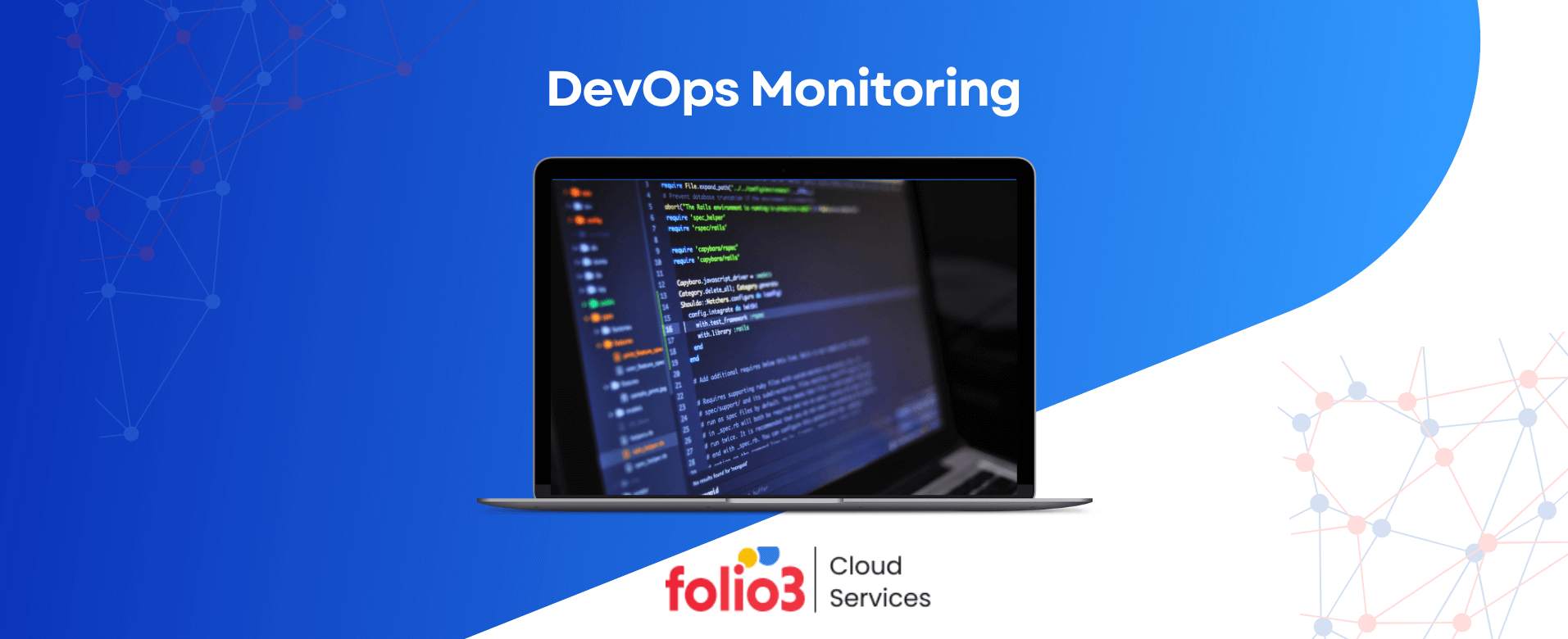In today’s digital landscape, businesses are increasingly turning to cloud technology to boost their efficiency and productivity. To harness the power of the cloud, many are choosing to outsource cloud migration services.
Well, in this blog, we’ll explore the complete ins and outs of outsourcing cloud migration in the US, with a special focus on how businesses can benefit. By the end of this guide, you’ll have a clear path to leverage cloud migration for your company’s success.
What is Cloud Migration?
Cloud migration is a strategic process that involves shifting a company’s digital assets, data, applications, and other IT resources from on-premises servers to cloud-based platforms. This transition has become a fundamental aspect of modern business operations, driven by the need for flexibility, efficiency, and enhanced performance.
Cloud migration is not just a one-time event; it’s an ongoing strategy for businesses to adapt, grow, and optimize their IT infrastructure. By entrusting this process to experienced professionals, companies can experience a host of benefits that shape their journey to the cloud.
Benefits of Outsource Cloud Migration Services
Outsource cloud migration services is a strategic decision that can significantly impact your business operations and bottom line. Let’s explore the benefits of entrusting this pivotal process to experienced professionals:
Cost-Efficiency and Business Focus
- Cost Savings: Outsourcing cloud migration eliminates the need for significant upfront investments in infrastructure and skilled IT personnel. You can redirect these savings toward other critical aspects of your business, such as innovation or marketing.
- Focus on Core Competencies: By delegating cloud migration to experts, your team can concentrate on what it does best—driving your business forward. This focus leads to increased productivity and improved core service delivery.
Expertise and Experience
- In-Depth Knowledge: Cloud migration service providers have a deep understanding of cloud platforms, best practices, and potential challenges. Their expertise ensures a smoother and more efficient migration process.
- Error Minimization: With experienced professionals at the helm, the likelihood of migration errors and downtime is significantly reduced. This translates to a seamless transition without business disruptions.
Scalability and Flexibility
- Rapid Scaling: Cloud migration simplifies the process of scaling your infrastructure as your business grows. Outsourcing this task ensures that you can quickly adapt to changes in demand without the complexity of managing it internally.
- Optimized Resource Allocation: Cloud migration experts can help you choose the right resources for your business, optimizing resource allocation and reducing costs while ensuring you have exactly what you need, when you need it.
Enhanced Security
- Advanced Security Measures: Cloud migration providers implement robust security measures, including data encryption, access controls, and constant monitoring. This ensures your data remains secure in a rapidly evolving cybersecurity landscape.
- Regulatory Compliance: Staying compliant with data security and privacy regulations is a top priority. Migration experts are well-versed in these regulations and can help your business meet its compliance obligations.
Operational Efficiency
- Streamlined Operations: Cloud migration streamlines your operations by providing access to automated features, streamlined workflows, and tools for better management and decision-making.
- Real-Time Updates: Cloud platforms provide real-time data, ensuring your business is always working with the most current information, which can lead to faster and more informed decision-making.

Ready to Migrate to the Cloud?
Seamlessly transition your business operations to the cloud for increased efficiency, enhanced security, and unlimited growth potential. Let’s embark on your cloud journey today!
Reduced Downtime
- Minimal Business Disruption: Outsourcing migration minimizes the risk of extended downtime. Professionals handle the process efficiently, allowing your business to maintain its operations without significant interruptions.
- Quick Issue Resolution: If issues do arise during migration, experts can address and resolve them promptly, reducing the impact on your business.
Focus on Innovation
- Innovation Opportunities: By outsourcing routine IT management tasks like migration, your IT team can focus on strategic, forward-thinking projects that drive innovation and competitiveness.
- Market Advantage: Staying focused on innovation positions your business to seize opportunities and gain a competitive edge in a rapidly evolving marketplace.
The Process of Outsourcing Cloud Migration Services
The journey of outsourcing cloud migration services involves a series of well-defined phases that collectively ensure a smooth and successful transition. Let’s explore each step in detail to provide you with a clear understanding of the process:
Assessing Your Current Infrastructure
- Comprehensive Audit: Start with a comprehensive audit of your existing IT infrastructure. This involves identifying all digital assets, applications, and data that will be migrated.
- Mapping Dependencies: Understand the dependencies between different components to ensure they function seamlessly post-migration.
- Performance Evaluation: Evaluate the performance of your current infrastructure, pinpointing its strengths and weaknesses.
Planning the Migration Strategy
- Setting Objectives: Define clear objectives for the migration. What do you aim to achieve through this process? Goals may include cost reduction, improved performance, or enhanced security.
- Selecting Cloud Services: Choose the right cloud service provider(s) based on your goals, budget, and technical requirements. Options include AWS, Azure, Google Cloud, and others.
- Creating a Timeline: Develop a detailed timeline that outlines the sequence of migration activities. This helps ensure minimal disruptions to your operations.
Execution and Monitoring
- Data Transfer: The actual migration begins with the transfer of data and applications to the chosen cloud platform. This is often done in stages to minimize downtime.
- Testing and Validation: Rigorously test the migrated applications and data to ensure they function correctly in the cloud environment. Verify data integrity, application performance, and security measures.
- Monitoring Progress: Continuously monitor the migration process. Use monitoring tools to track the status of data transfer, application performance, and overall system health.
- Issue Resolution: Address any issues promptly. Having a well-prepared team and cloud provider support ensures rapid issue resolution and minimizes disruptions.
Post-Migration Support
- Ongoing Maintenance: Post-migration support includes ongoing maintenance and management of the cloud environment. This ensures that your systems run efficiently.
- Optimization: Continuously optimize your cloud resources to ensure cost-effectiveness and peak performance.
- User Training: If your team is not well-versed in the cloud environment, it’s crucial to provide training to ensure they can effectively manage and operate within the new setup.
Documentation and Reporting
- Documentation: Create comprehensive documentation of your cloud setup. This includes information on configurations, security protocols, and any unique aspects of your cloud environment.
- Reporting: Maintain regular reporting on the performance of your cloud infrastructure, highlighting key metrics and insights that help in decision-making.
Feedback and Iteration
- Feedback Gathering: Collect feedback from users and stakeholders regarding their experience with the migrated systems. This valuable input can inform future improvements.
- Iterative Improvements: Use the gathered feedback to make iterative improvements to your cloud setup. Cloud migration is not a one-time event, but an ongoing process of refinement.
Scalability and Future-Proofing
- Scalability Planning: Ensure that your cloud environment is designed to scale as your business grows. Assess whether the infrastructure can handle increased demand.
- Future-Proofing: Keep an eye on emerging cloud technologies and trends to ensure your cloud infrastructure remains up to date and competitive.
Case Studies
Growth. Enabled.

Sunburst Type To Learn

InGenius Prep

Magento Cloud Migration

Nutrition Detection App
Considerations for Outsourcing Cloud Migration Services
When contemplating the outsourcing of cloud migration services, it’s vital to weigh various considerations to ensure a seamless transition. Let’s delve into these factors:
Choosing the Right Provider
- Industry Expertise: Look for providers experienced in your industry. They’ll understand your specific challenges and compliance requirements, streamlining the migration process.
- Reputation and Track Record: A strong track record with successful migration projects and positive client feedback is a good sign of a reliable provider. Explore client testimonials and reviews for insights.
- Comprehensive Services: Seek providers who offer a range of services, from assessment and planning to execution and post-migration support. Comprehensive services can simplify your migration journey.
Service Level Agreements (SLAs)
- Customized SLAs: Ensure that the SLAs provided align with your business requirements. Customized SLAs enable you to define performance expectations and guarantee service quality.
- Response Times: Clarify the provider’s response times for issue resolution, especially during critical situations. Prompt responses are essential to minimize downtime.
- Data Ownership and Access: Understand the SLAs regarding data ownership, access, and security. Comprehensive SLAs should protect your data and provide you with control.
Data Security and Compliance
- Regulatory Expertise: Ensure that the provider is well-versed in industry-specific regulations, like HIPAA or GDPR, if applicable. Compliance is essential to avoid legal complications.
- Data Encryption: Verify that the provider employs data encryption and access controls to safeguard your sensitive information, reducing the risk of data breaches.
- Data Backup and Recovery: Discuss data backup and recovery procedures to guarantee data resilience, allowing you to restore lost data in case of an incident.
Customization and Support
- Tailored Solutions: Opt for providers that offer customized solutions. They can tailor their services to meet your specific migration needs and align with your business goals.
- Post-Migration Support: A dependable provider should offer post-migration support to address any issues or concerns that may arise after the migration is completed. Timely support is crucial.
- Training and Knowledge Transfer: Inquire about training and knowledge transfer options. A good provider will ensure your team is well-equipped to manage the cloud environment effectively.
Communication and Transparency
- Communication Channels: Evaluate the provider’s communication channels. Transparent communication is vital for keeping you informed about the migration’s progress and addressing any concerns.
- Reporting and Updates: Confirm how often you will receive progress reports and updates. Regular reporting ensures you’re aware of the migration’s status.
Exit Strategy
- Exit Provisions: While considering migration to the cloud, also consider how to exit if needed. Ensure the provider has clear exit provisions to facilitate a smooth transition should you decide to switch providers or return to on-premises infrastructure.
- Data Portability: Discuss data portability to understand how you can retrieve your data if you choose to migrate to a different cloud provider.
How to Select the Right Cloud Migration Service Provider?
Choosing the right cloud migration services provider is a pivotal decision that can significantly impact the success of your migration project. Here, we’ll explore the key considerations and steps in detail to guide you in making an informed choice:
Research and Due Diligence
- Industry Specialization: Begin your search by looking for providers with specific expertise in your industry. Their familiarity with industry-specific regulations and best practices can be a game-changer.
- Check Credentials: Verify the provider’s credentials, certifications, and affiliations with reputable industry organizations. These certifications validate their commitment to maintaining industry standards.
- Client References: Reach out to current or former clients of the provider to gather real-world insights into their performance. This direct feedback can be invaluable.
Client Testimonials and Reviews
- Real-World Experiences: Read client testimonials and reviews to gain a deeper understanding of the provider’s performance from the perspective of their clients. This can provide a wealth of insights into their service quality and responsiveness.
- Case Studies: Delve into case studies or success stories that highlight the provider’s ability to deliver results and solve complex migration challenges.
Requesting Proposals and Quotes
- Customized Proposals: Seek out customized proposals that detail the services the provider will deliver, the scope of work, timelines, and cost estimates. This should include a clear breakdown of costs.
- Comparative Analysis: Request proposals and quotes from multiple providers. This allows you to compare their offerings, evaluate pricing structures, and determine the best fit for your needs and budget.
Evaluating Expertise and Resources
- In-House Expertise: Assess the provider’s in-house expertise, team qualifications, and experience with cloud migration projects. They should have a dedicated team of experts.
- Resource Capability: Confirm that the provider has the necessary resources, including robust infrastructure and tools, to handle the scale and complexity of your migration project.
Service Flexibility and Customization
- Tailored Solutions: Opt for providers that offer customized solutions. Your migration requirements are unique, and a one-size-fits-all approach might not align with your specific needs and objectives.
- Scalability: Ensure that the provider’s solutions are scalable, adapting to your evolving needs as your business grows.
Contractual Clarity
- Detailed Agreements: Review contractual agreements thoroughly. Ensure all services, responsibilities, and obligations are explicitly defined, leaving no room for ambiguity.
- Exit Provisions: While planning for the future, also consider exit provisions, which outline the process of terminating the contract and facilitating a smooth transition should the need arise.
Communication and Collaboration
- Communication Channels: Evaluate the provider’s communication channels. Transparency and open lines of communication are essential for a successful partnership.
- Project Management: Assess the provider’s project management approach and team. Effective project management ensures that your migration project stays on track.
Data Security and Compliance
- Security Protocols: Verify the provider’s security protocols and data protection measures. Data security is a non-negotiable aspect of the migration process.
- Compliance Commitment: Confirm the provider’s commitment to compliance with industry-specific regulations, such as GDPR or HIPAA, if applicable to your business.
Cost Considerations
Understanding the cost aspects of cloud migration is essential for effective budgeting and optimizing your return on investment (ROI). Let’s explore the cost considerations in detail:
Factors Affecting Cost
- Project Scale and Complexity: The size and complexity of your migration project significantly influence costs. Larger, more intricate migrations may require more time and resources.
- Choice of Cloud Service Provider: The cloud service provider you select will impact costs. Some providers may offer competitive pricing for specific services or features.
- Resource Requirements: Consider the resources you need in terms of storage, computing power, and network bandwidth. Ensuring that you allocate the right resources is key to cost efficiency.
- Data Transfer and Bandwidth: The volume of data you need to transfer and the bandwidth required to do so can affect costs. Faster, higher bandwidth connections often come at a premium.
- Post-Migration Management: Don’t forget to factor in the cost of post-migration management, including ongoing maintenance, support, and optimization.
Budgeting and Cost-Saving Strategies
- Phased Migrations: Consider breaking the migration into phases. This approach helps spread costs over time and minimizes financial strain on your organization.
- Regular Resource Review: Regularly review your cloud resources to ensure they’re optimized. Unused or unnecessary resources can accumulate costs.
- Performance Monitoring: Implement monitoring tools to track resource performance and costs. Use these insights to make data-driven decisions on resource allocation.
- Resource Scaling: Take advantage of cloud scalability. Scale resources up or down as needed, aligning with your current requirements. This dynamic approach ensures cost efficiency.
Licensing and Software Costs
- Licensing Fees: Some applications and software solutions may require licensing fees when running on the cloud. Understand these costs and budget accordingly.
- Open Source Alternatives: Explore open-source alternatives to proprietary software. These can often provide similar functionality at a lower or no cost.
Data Storage and Data Transfer Costs
- Data Storage Fees: Cloud providers typically charge for the amount of data you store in their data centers. Understanding your storage needs is critical for cost control.
- Data Transfer Fees: Transferring data in and out of the cloud may incur data transfer fees, which can vary based on the volume of data moved.
Data Backup and Recovery Costs
- Backup Strategy: Implement a backup strategy that aligns with your needs and budget. Some cloud providers offer cost-effective backup solutions.
- Recovery Costs: While planning for backups, consider the costs associated with data recovery, including the time and resources needed to restore lost data.
Resource Optimization
- Resource Rightsizing: Regularly review and optimize your cloud resources. Rightsizing ensures that you’re paying for exactly what you need, and no more.
- Unused Resources: Identify and eliminate unused or underutilized resources to reduce unnecessary expenses.
Total Cost of Ownership (TCO)
- TCO Analysis: Consider conducting a TCO analysis to evaluate the total cost of owning and managing your cloud infrastructure over time. This analysis provides a comprehensive view of long-term costs.
- ROI Assessment: Assess the return on investment (ROI) of your migration. Measure the benefits against the costs to ensure that your migration delivers value to your organization.

Ready to Migrate to the Cloud?
Seamlessly transition your business operations to the cloud for increased efficiency, enhanced security, and unlimited growth potential. Let’s embark on your cloud journey today!
Conclusion
In the digital era, outsourcing cloud migration services has evolved from an option to a strategic necessity. The benefits are clear: enhanced scalability, cost-efficiency, data security, and operational flexibility, to name a few. By entrusting this pivotal process to experienced professionals, you ensure a seamless transition into the cloud, positioning your business for success.
At Folio3, we specialize in delivering reliable, affordable, and expert outsourced cloud migration services. Connect with us to unlock the full potential of cloud migration, staying competitive and adaptable in the ever-evolving digital landscape.
FAQs
What Are the Key Benefits of Outsourcing Cloud Migration Services?
Answer: Outsourcing cloud migration services offers a range of benefits, including cost savings, access to expertise, scalability, enhanced security, and operational efficiency. It allows businesses to focus on their core competencies while experienced professionals handle the complexities of migration.
How Can I Select the Right Cloud Migration Service Provider for My Business?
Answer: To choose the right provider, consider factors like industry specialization, credentials, client references, customized solutions, contractual clarity, communication, and compliance. Conduct thorough research and request customized proposals to make an informed decision.
What Cost Considerations Should I Keep in Mind When Outsourcing Cloud Migration Services?
Answer: Key cost considerations include factors like project scale and complexity, choice of cloud service provider, resource requirements, data transfer and bandwidth, post-migration management, licensing and software costs, data storage and data transfer expenses, data backup and recovery costs, resource optimization, and conducting a Total Cost of Ownership (TCO) analysis.
Can You Explain the Phases of the Cloud Migration Process in More Detail?
Answer: The cloud migration process involves several phases, including assessing your current infrastructure, planning the migration strategy, execution and monitoring, post-migration support, documentation and reporting, feedback and iteration, and scalability and future-proofing. Each phase is critical for a successful migration.
Why Is Outsourcing Cloud Migration Services a Recommended Approach for Businesses in the US?
Answer: Outsourcing cloud migration services is recommended because it allows businesses to leverage the expertise of experienced professionals, reduces upfront infrastructure costs, and ensures a seamless transition to the cloud. It also enables businesses to stay competitive and adapt to a dynamic digital landscape.

























